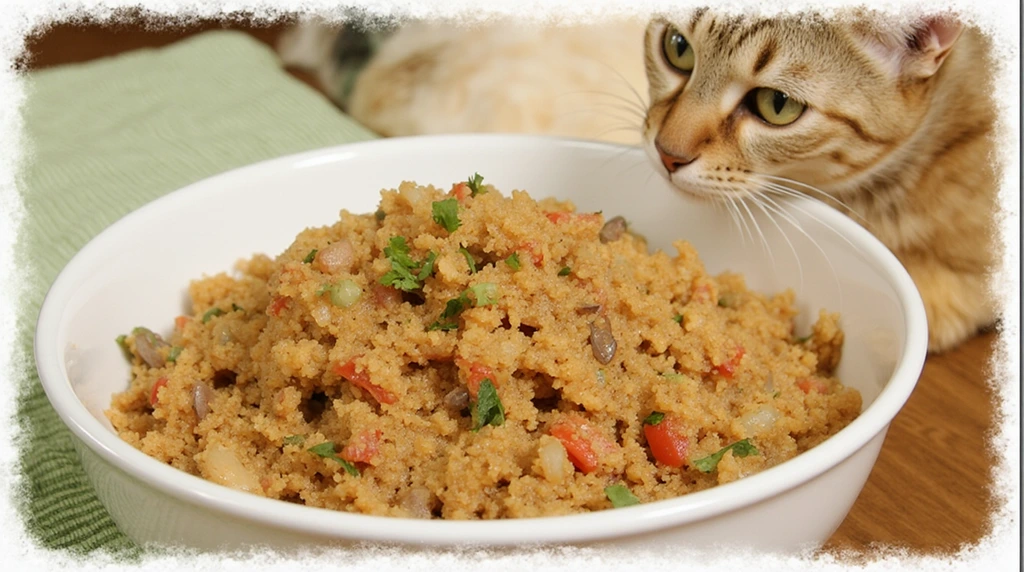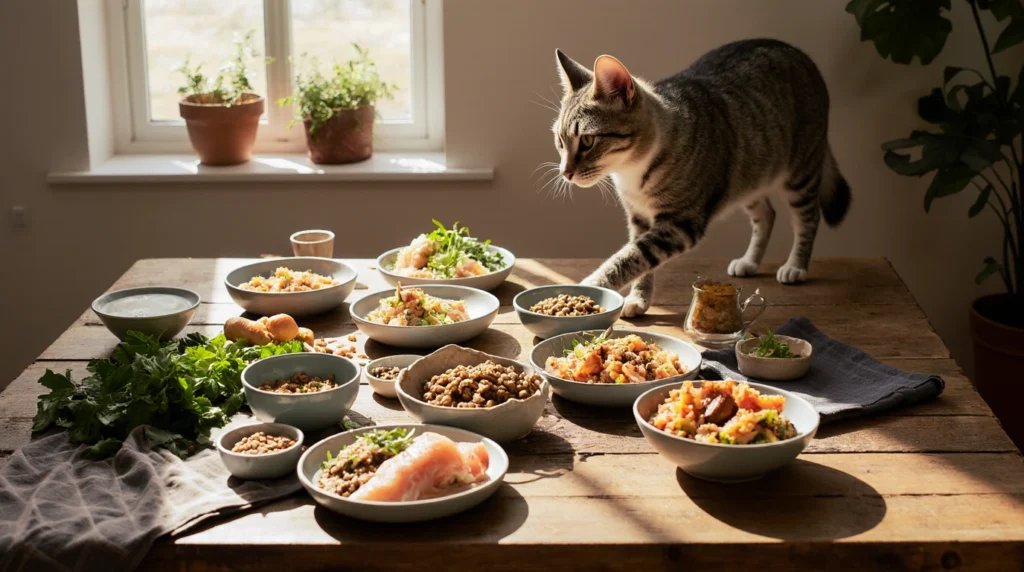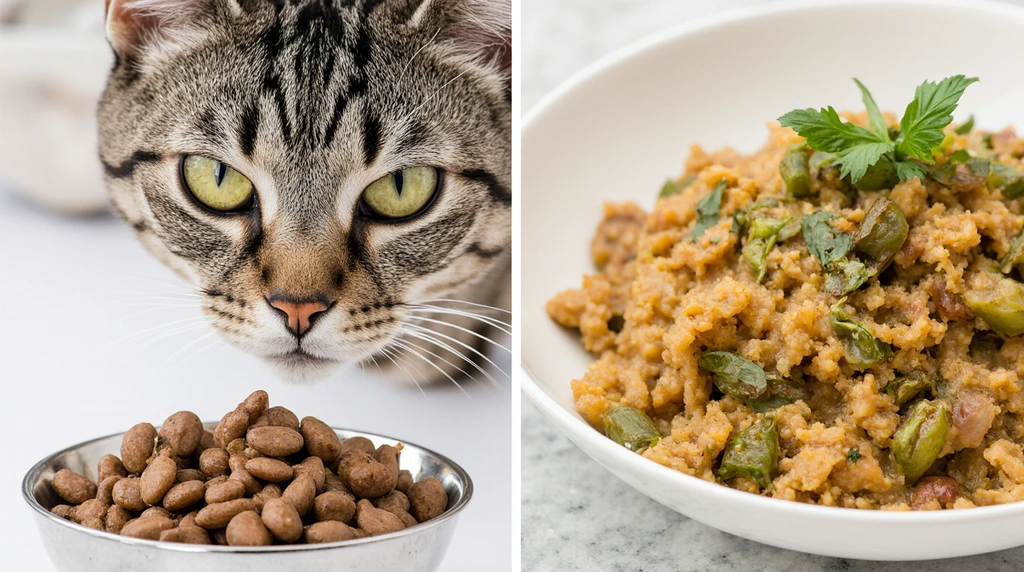Introduction
Let’s be honest: if you’re Googling recipes for homemade cat food, there’s a good chance you’re doing it out of love — or maybe guilt. You’ve seen the recalls. You’ve squinted at those unreadable ingredient lists on store-bought kibble. And maybe, just maybe, you’ve wondered if your cat deserves better than a scoop of brown pebbles poured from a bag.
You’re not alone. More cat parents than ever are turning to homemade meals, hoping to take control over their pets’ nutrition. And sure, the internet is brimming with recipes that promise to be “vet-approved,” “easy,” and “nutritionally balanced.” But here’s the twist most blogs won’t admit: some of those feel-good, Pinterest-perfect meals might be doing more harm than good.
That’s not fearmongering — that’s fact. Feline biology is precise. Miss the mark on taurine, calcium, or vitamin A, and you could unintentionally invite serious health problems. And let’s not even talk about bacteria risks from trendy raw diets.
This article is your reality check — without the judgment. We’ll unpack the real pros and cons of homemade cat food recipes, decode what’s safe, call out what’s dangerous, and give you the clarity to decide: are you helping your cat thrive… or walking into a nutritional minefield?
Table of Contents
Why Pet Owners Are Flocking to Recipes for Homemade Cat Food

There’s a quiet revolution happening in kitchens across the world — and it’s not just sourdough starters or oat milk experiments. It’s homemade cat food. More and more pet owners are trading store-bought cans for cutting boards, pulling out raw chicken instead of commercial kibble, and following online recipes in the hope of feeding their cats something “better.”
So, what’s driving this shift?
1. A Deepening Distrust of Commercial Cat Food
Let’s start with the elephant in the litter box. In the last decade, headlines about contaminated pet food, questionable meat sources, and mysterious “animal by-products” have left many cat owners uneasy. For every shiny pet food ad showing a happy tabby, there’s a Reddit thread or recall list reminding people just how murky the commercial pet industry can be.
This isn’t just paranoia. In 2007, a major pet food recall linked to melamine contamination affected thousands of cats and dogs. More recently, some brands have come under fire for not meeting even basic nutritional standards. The result? Many owners feel that if they want to know what’s going into their cat’s bowl, they’ll have to make it themselves.
2. Human Wellness Culture Is Spilling into Pet Nutrition
You’ve probably noticed it. Gluten-free cat treats. Grain-free diets. Organic, non-GMO, wild-caught salmon pâté. Our obsession with clean eating, low-carb living, and holistic health isn’t just about us anymore — it’s trickled into how we feed our pets.
To many, cooking for a cat is just an extension of how we cook for ourselves. If you’re meal-prepping quinoa bowls and turmeric shots, tossing a chicken liver into the blender for your cat might not seem so strange.
3. A Desire for Control — and Connection
Here’s something you don’t see on pet food labels: peace of mind. Making homemade cat food offers a sense of control — a quiet confidence that you’re doing something right. For some, it’s also a bonding ritual. Stirring bone broth, measuring supplements, even packaging meals into Tupperware… it becomes a gesture of love, almost meditative in its routine.
But — and it’s a big but — good intentions don’t always equal good nutrition.
Are Homemade Cat Food Recipes Always Safer?
Not necessarily. While DIY meals give you ingredient transparency, they also put the burden of nutritional accuracy on your shoulders. Unlike human food, cats require precise balances of amino acids, fatty acids, and vitamins to survive — let alone thrive. A charming recipe on TikTok might look “healthy” but leave out something as crucial as taurine, which can lead to heart failure if missing over time.
The Hidden Dangers Lurking in Popular DIY Recipes
Let’s get real: the internet is flooded with recipes for homemade cat food — but not all of them are created with your cat’s biology in mind. In fact, many of them are unintentionally dangerous. And the scariest part? They often look healthy. Fresh ingredients, clean kitchen photos, maybe even a vet-sounding quote. But behind the aesthetic? Massive nutritional holes.
1. The Taurine Trap: The Silent Killer
Taurine is not optional for cats. It’s an essential amino acid that supports everything from heart function to vision. Unlike humans or dogs, cats can’t produce enough of it on their own — they have to get it from food. And here’s the kicker: taurine breaks down when cooked.
Many homemade recipes — especially those involving chicken or turkey — don’t include taurine supplementation at all. Or they use cooking methods that eliminate what little taurine is naturally present. The result? Over time, your cat could develop dilated cardiomyopathy (a fatal heart condition) or irreversible blindness. And you might not notice until it’s too late.
2. Calcium Catastrophes and Bone Disorders
Ever seen a recipe that’s “just chicken breast and rice”? Sounds clean, right? Maybe even Instagram-worthy. But it’s also wildly unbalanced. Cats need calcium to balance the high phosphorus in meat. Without it, their bodies pull calcium from their own bones, leading to fractures, dental issues, and long-term skeletal damage.
Balanced commercial foods include ground bone or calcium supplements for this exact reason. Many DIY recipes? Don’t even mention it.
3. Vitamin A & D Overdose — Yes, You Can Go Too Far
Some well-meaning owners overcorrect by throwing in liver — lots of liver — because it’s “nutritious.” And it is. But too much liver, especially from animals like beef or chicken, can lead to toxic levels of vitamin A or D. The symptoms? Lethargy, bone deformities, even death in extreme cases.
This is where things get tricky: the line between “deficient” and “toxic” isn’t wide. Homemade cat food isn’t just about “real ingredients” — it’s about precision.
4. The Raw Food Risk
Raw diets are trendy. They’re also controversial. While some argue raw meat mimics a cat’s ancestral diet, others (including most vets) warn of bacteria like salmonella and listeria — not just for the cat, but for you and your family. Cats may handle it better than humans, but it’s still a gamble, especially in homes with children, elderly people, or immune-compromised individuals.
So, Are All DIY Recipes Unsafe?
No — but the bar for safe is much higher than most people realize. Unless a recipe comes from a veterinary nutritionist or is tailored with the help of a professional (and includes the right supplements), you’re probably missing something vital. Unfortunately, cats won’t tell you until their bodies start breaking down.
What the Science Says About Feline Nutrition
It’s tempting to approach cat food the same way we think about our own meals — balance some protein, toss in a veggie, maybe avoid gluten if we’re feeling trendy. But feline nutrition doesn’t follow human logic. It follows biology. And science? It’s pretty unflinching about what cats actually need.
1. Cats Are Obligate Carnivores — But That’s Just the Beginning
Yes, cats need meat — but not just any meat. They require specific nutrients that only animal tissue (and certain organs) provide. For example:
- Taurine (essential amino acid)
- Arachidonic acid (essential fatty acid)
- Preformed vitamin A (cats can’t convert beta-carotene)
- Niacin and B vitamins (cannot be synthesized internally)
These aren’t “nice-to-haves.” They’re survival-critical.
So when you see a DIY recipe with rice, peas, and chicken, it might feel “clean” or “natural,” but nutritionally, it can be devastatingly incomplete. Think of it like feeding a human nothing but toast and apple slices. Fine for a snack — disastrous long-term.
2. The AAFCO and NRC Guidelines: Why They Matter
Two major authorities — AAFCO (Association of American Feed Control Officials) and the NRC (National Research Council) — have established nutrient profiles for feline diets. They define exact amounts of 40+ nutrients needed per life stage (kitten, adult, senior).
Most commercial cat foods aim to meet or exceed these standards. Homemade recipes? Unless formulated by a vet nutritionist with precise math (often using software like BalanceIT), they usually fall short — or swing dangerously overboard.
What does that mean for the average pet owner following a TikTok or Pinterest recipe? It means there’s a 90% chance the meal is unbalanced — even if it looks healthy and your cat likes it.
3. Scientific Consensus: Homemade Is Possible — But Risky Without Expert Help
The veterinary consensus isn’t “never make homemade cat food.” It’s: “Don’t do it without expert oversight.” According to studies published in the Journal of the American Veterinary Medical Association (JAVMA), over 95% of online pet food recipes analyzed were nutritionally inadequate.
Some lacked vitamin D. Others had toxic levels of liver. Many missed key amino acids entirely. These aren’t minor flaws — they’re the kinds of gaps that can shave years off your cat’s life.
Is There a “Safe Zone” for DIY?
Yes — but it’s narrow. A truly safe recipe must:
- Match AAFCO/NRC minimums for every essential nutrient
- Be tailored to your cat’s life stage and health status
- Include species-appropriate supplements (like taurine, calcium, vitamin E)
- Be reviewed or formulated by a vet or animal nutritionist
Anything less is, frankly, a nutritional gamble.


